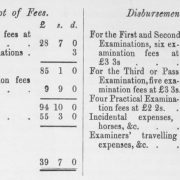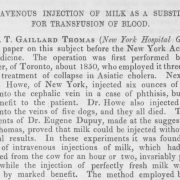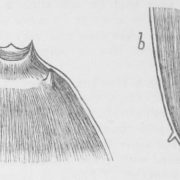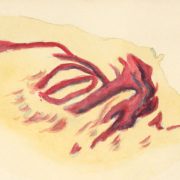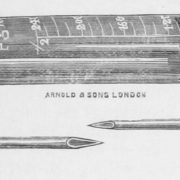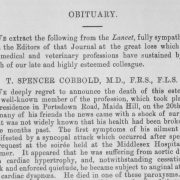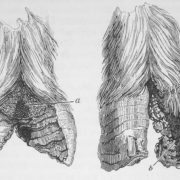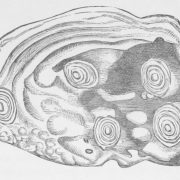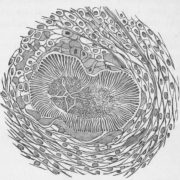[FS/2/2/2/1/9]
[[1]]
1884 Case 83, No 45.
June 10th
Laminitis in all four feet principally the fore ones due to being overworked on first journey the Battery.
Treatment. mash diet apply wet swabs to coronet.
Stand in tank 4 hours daily
[June] 22nd
Better. repeat treatment.
July 14th
I can see no signs of Laminitis about the feet at the present time. I suspect the case must have come on more of congestive than inflammatory. Going fairly sound & sent to duty to see whether any thing develops itself.
Discharged, Relieved.
Case 117, No 45
21st July
Laminitis Chronic. This horse (see case above) went to duty and after one mornings work came back intolerably lame with every symptom of laminitis. There is not much heat in the foot & no constitutional disturbance. I therefore conclude it is more congestive than inflammatory & more chronic than acute.
Stand in foot bath.
23rd
The casting committee assembled this day & this animal was brought forward by the O.C. I gave it as my opinion that the lameness would be recurrent & that from the short time I had known the animal it was impossible for me to say that the case was perfectly incurable. Nevertheless, I believe it to be so & the animal an undesirable one to retain for further treatment. There is no alteration in the shape of the feet, no rings round the wall, but the action is most indicative of the disease.
P.T.O
[[2]]
1884
July 24th
This morning the patient was brought out again for my inspection & was found so lame that he could only just progress on the back of the heels with his fore legs right out in front of him, his hind under the body.
Cold water applications & exercise.
Augt 1st
This morning is worse than ever & the animal having been cast, I discharge him off the books.
Discharged, incurable.
Autopsy. I only found in two places, not more than one inch wide any sign of discolouration of the sensitive laminae, they being here scarlet & at their attachment nearly black. The discoloured laminae were not enlarged but were flabby & portions of them remained adherent to the horny wall where this was removed. On examining the navicular bursa of one limb it was found to contain very little synovia. The perforans tendon has eroded as if it has been scraped with a knife. The navicular bone had brown patches on its fibro cartilage on either side of the central ridge. There was no sign of ulceration, but the cartilage was speckled with calcareous deposits. The opposite navicular bursa contained no synovia but was moist, the tendon eroded & discoloured, the fibro-cartilage covering the bone was brown along its lower half & speckled with calcareous deposits: at two small points blood could be seen when the bone was bare.
Remarks. This is a very exceptional case, I believe the whole lameness was due to the diseased navicular bursa, & that the laminitis appearance was post-mortem; yet, during life no one could have seen this patient but would have said that the gait was truly indicative of acute laminitis.
Remarked during life that the feet presented no appearance of laminitis, & as will be seen from my remarks I doubted the diagnosis of my predecessor; yet when the animal came under my observation lame, I felt no doubt in my mind of the correctness of my predecessors views, & diagnosed the case, even in the absence of heat & alteration in the feet as laminitis chronic.
M/2 R.A. M 45 Sex G Age 6
Laminitis
[Transcription by Claudia Watts, KCL History, April 2019]

